Is Aloe Vera Good for Low Porosity Hair OR Can It Dry Out Your Hair?
Updated on
This post may contain affiliate links. As an Amazon Associate, we may earn from qualifying purchases.
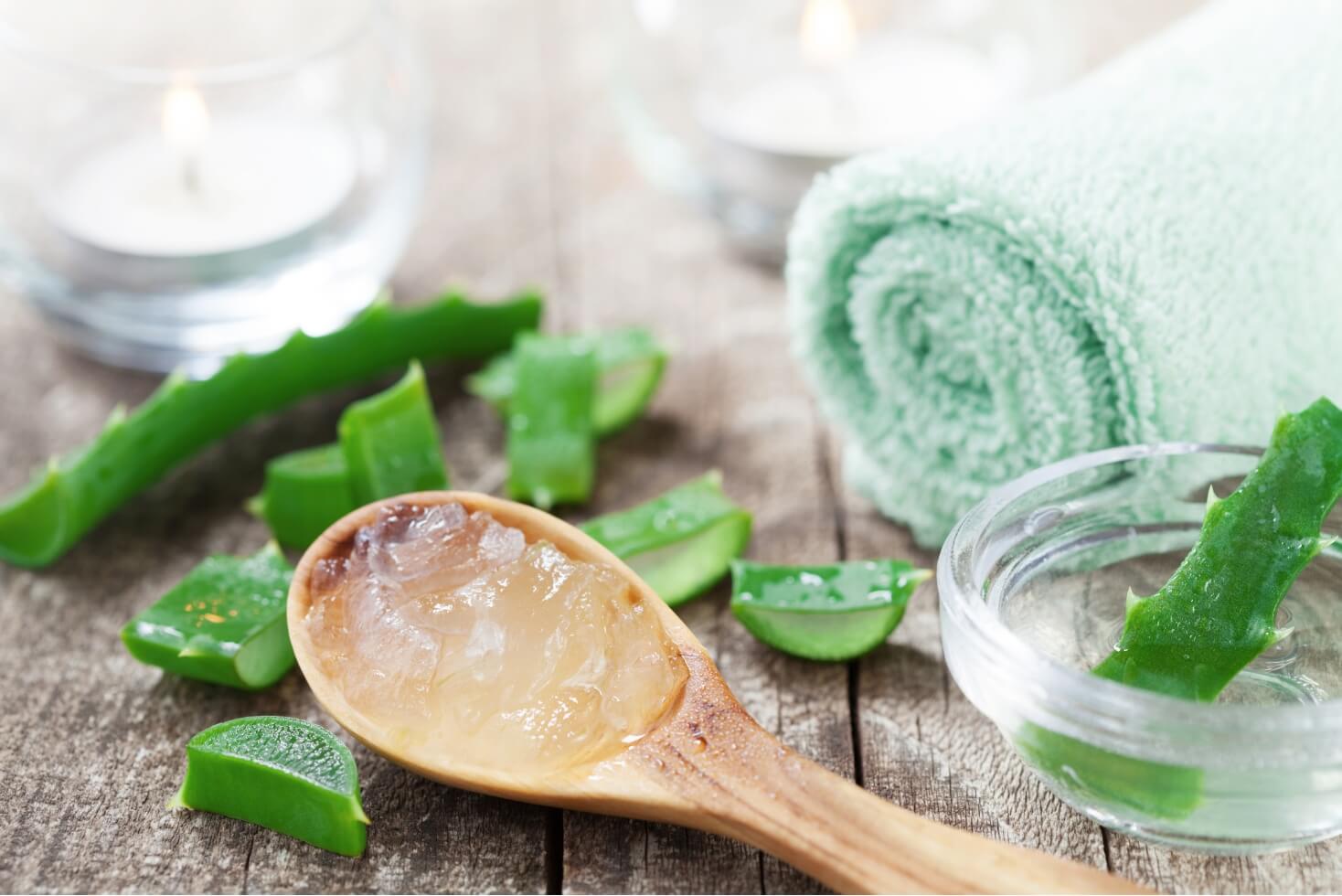
Aloe vera gel is a film-forming humectant that pulls in moisture and prevents dehydration.
So if your hair is low porosity, you’d think aloe vera is a no-brainer, right?
Well, depending on how you use it, aloe vera can be a double-edged sword.
Some swear by it, while others caution against it.
Yes, it can be a brilliant moisturizer, but some people overlook the fact that aloe vera is also nutrient-dense, packed with amino acids, and acidic, with a pH level of 4.5.
So is aloe vera actually good for low porosity hair, OR should you be cautious about its risk of clogging the hair cuticles?
Let’s find out …
Table of Contents
- Aloe Vera as a Hair Moisturizer
- Is Aloe Vera Good for Low Porosity Hair?
- Common Problems With Aloe Vera for Low Porosity Hair
- How to Use Aloe Vera for Low Porosity Hair Correctly
- Mix Aloe Vera Gel With Warm Water
- Use Aloe Vera Juice Instead of the Gel
- Mix Aloe Vera with Lightweight Oils
- Use It as a Pre-Poo Treatment
- Use It After a Clarifying Shampoo
- Mix It with Rhassoul Clay and Use as a Deep Conditioner
- Apply It Only to the Ends
- Use the Greenhouse Technique
- Keep Assessing Your Hair
- When is Aloe Vera Beneficial for Low Porosity Hair?
- Allergic Reaction Disclaimer
- Final Thoughts
Aloe Vera as a Hair Moisturizer
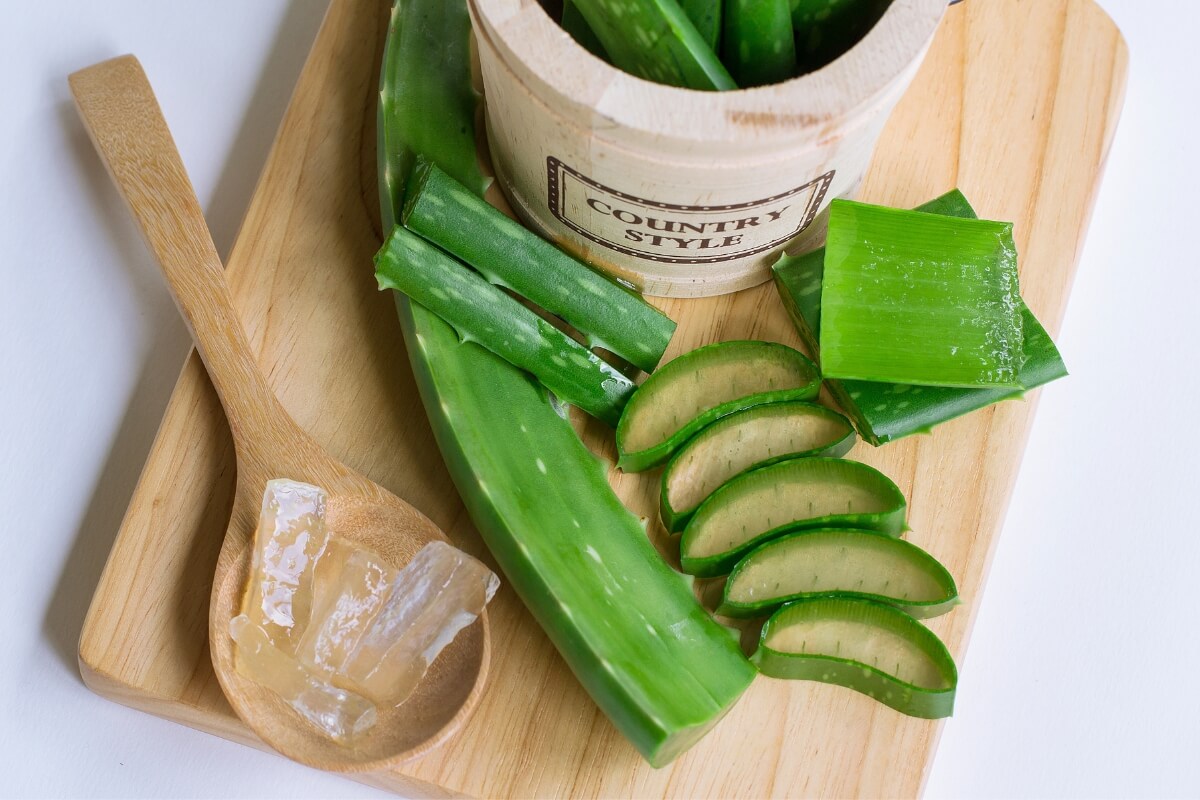
The mucilage or gel extracted from the aloe vera plant (Aloe barbadensis miller) consists of up to 99.5% water. The remaining 0.5% is made up of fat-soluble and water-soluble enzymes, polysaccharides, phenolic compounds, vitamins, minerals, amino acids, and organic acids. [1]
The “water-loving” properties of aloe vera make it an excellent natural moisturizing ingredient. This is due to its Polysaccharide compounds that are highly hygroscopic, meaning they have the ability to absorb water microscopically (humectant).
Related: Humectants for low porosity hair.Aloe vera extract, in the form of a gel, can benefit the hair by restoring moisture, adding slip for detangling, enhancing cellular regeneration for promoting hair growth and fending off bacteria on the scalp to prevent inflammatory conditions like fungus and dandruff.
But still, given all its inherent benefits, there have been testimonies of people experiencing dry and stiff hair, reduced elasticity, and symptoms similar to protein overload after using aloe vera. To be precise, these problems were more common in people with low porosity and type 3 and 4 hair.
So this begs the question …
Is Aloe Vera Good for Low Porosity Hair?
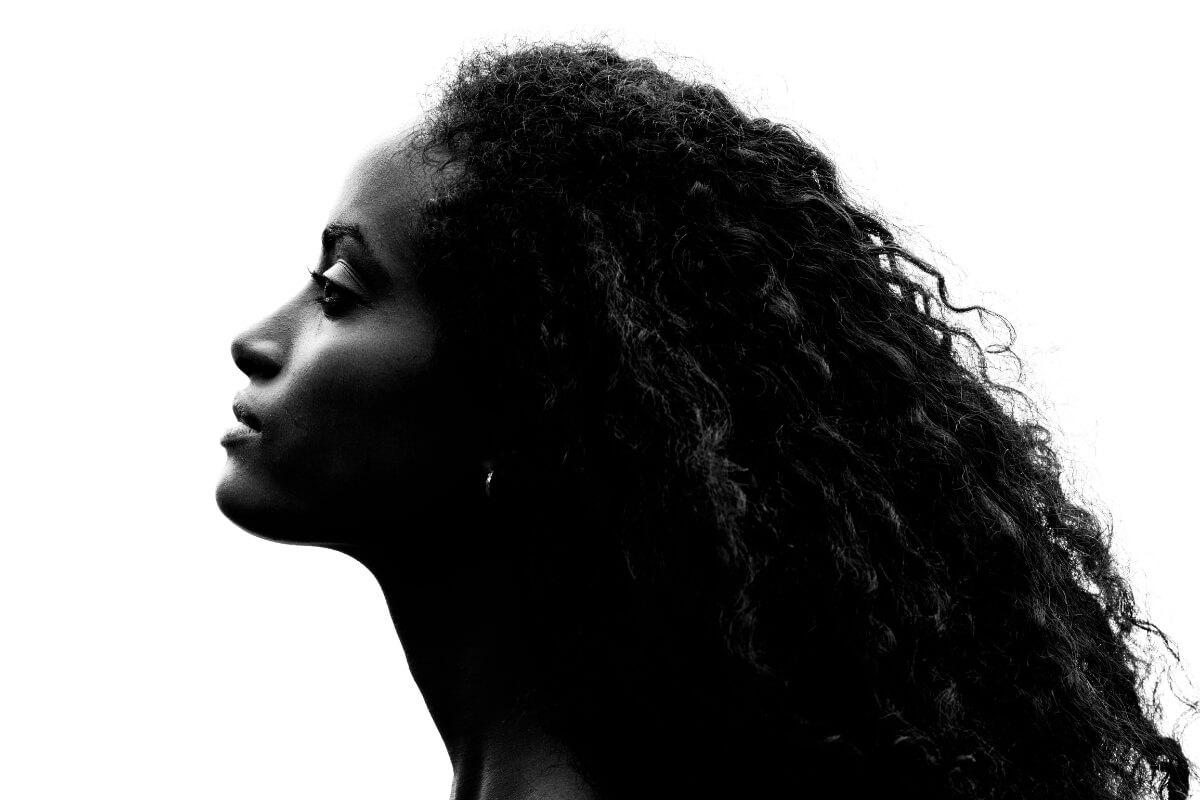
Aloe vera can be good for low porosity hair when used correctly in an appropriate form or combined with other products. It is essential to mix it with other hydrators to avoid the dry cast and buildup.
Although aloe vera gel is known for its ability to trap moisture and retain it for longer, its interaction with low porosity hair, which has flat-laying (almost closed) cuticles, can result in excess residual buildup on the surface of the hair.
To get around this problem, you have to do two things:
- Don’t leave aloe vera in your hair for too long This will ensure that you get the most out of its hydrating capabilities without overwhelming your hair.
- Mix it with other products such as oils and buttersIt will be able to penetrate the hair cuticles more effectively and provide deeper hydration.
The best way to find out if aloe vera is good for your hair is to do a strand test and monitor how your hair reacts to it over time. After all, what works for one person may not necessarily work for another!
So experiment and adjust accordingly with trial and error.
Let me elaborate more on the problems you may experience …
Common Problems With Aloe Vera for Low Porosity Hair
To fully understand how aloe vera works on low porosity hair, it’s essential to understand the characteristics of aloe vera and the condition of the hair.
Here’s a quick summary:
Characteristics of Low Porosity Hair
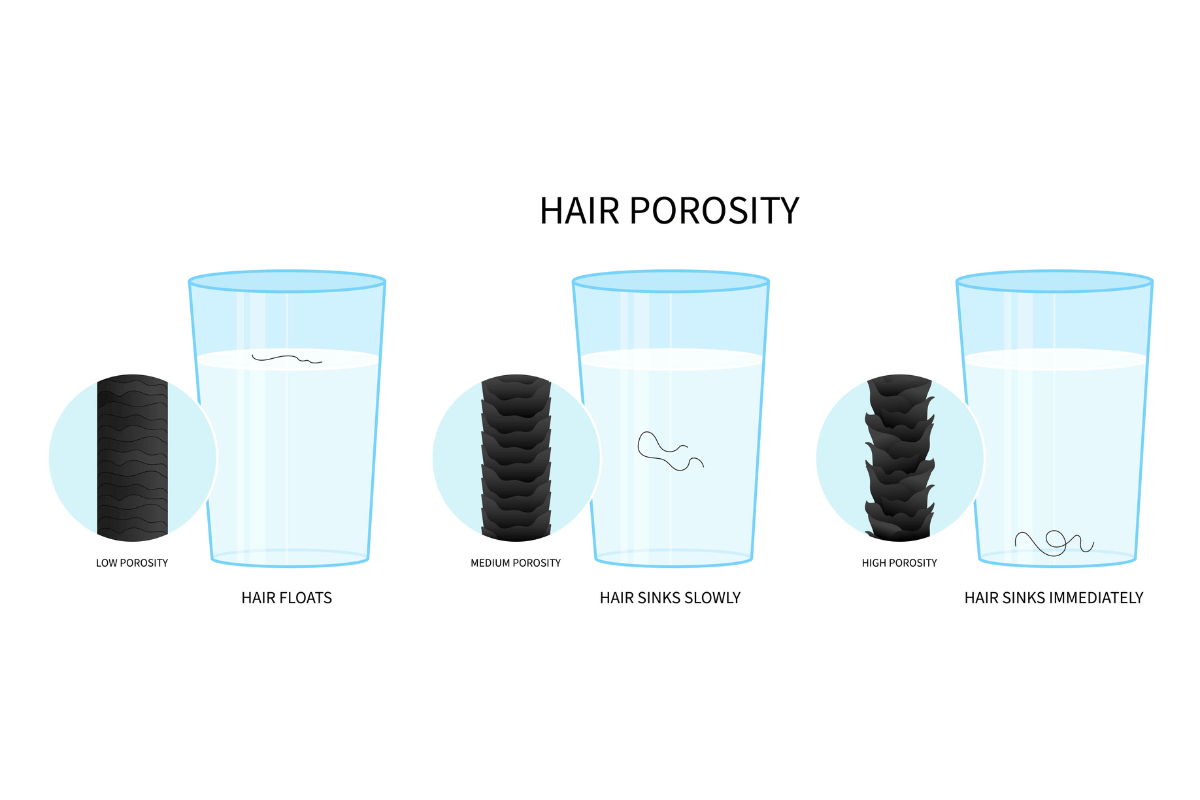
In low porosity hair, the cuticles are compact. They are tight, flat, and resistant to water, which makes it difficult for moisture to penetrate the hair shaft. Hair with lower porosity also takes time to soak wet when washed and takes longer to dry.
Another important thing to note is that lower porosity hair tends to be slightly acidic with a pH range of 4.5 – 5.5 due to the nature of its closed cuticles at all times.
The pH balance theory explains that when the hair’s environment is alkaline, the cuticles are raised (open), and the cuticles stay closed when the environment is acidic.
Read: Signs that your hair is low porosity.Characteristics of Aloe Vera
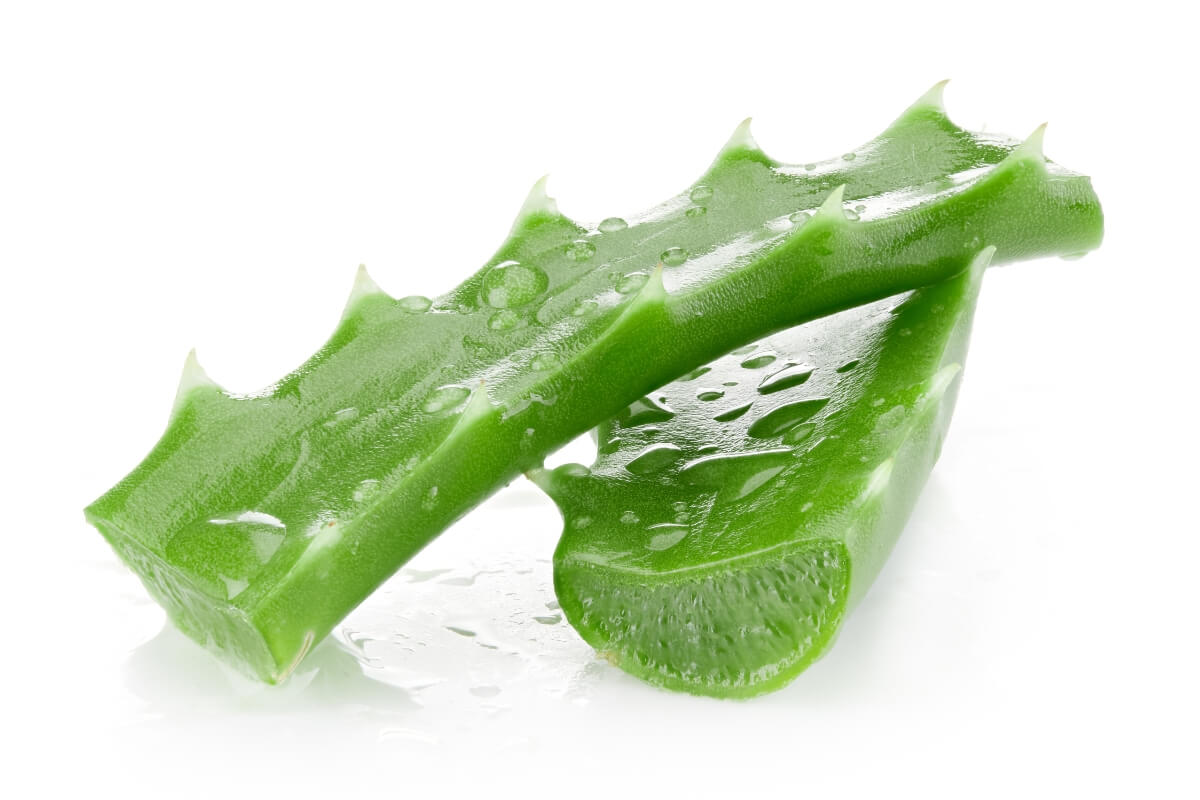
Pure aloe vera gel has a natural pH range of 4.5 [2], which makes it slightly acidic. Any substance that nudges the hair into an acidic state will have the tendency to contract the hair cuticle cells. [3]
Aloe vera also has a dense nutrient profile consisting of carbohydrates, vitamins, amino acids, water, and minerals, which means it can easily overload the tightly bound cuticles of hair that has lower porosity.
Aloe Vera Makes Low Porosity Hair Drier
Low porosity hair thrives on lightweight products that don’t clog the cuticles.
Aloe vera, when applied in its purest form as a gel, is anything but lightweight. Even though it initially boosts moisture, a lot of it will remain on the surface of the hair due to its thick and gooey texture and consistency.
Aloe vera gel also dries out fast, forming a dry cast over the hair shaft. This can lead to dryness and brittle strands if you allow the gel to dry out completely and not rinsing it out after a long period of time.
Dry and brittle strands can eventually manifest in minor hair breakage, therefore reducing length and impeding hair growth.
Aloe Vera Can Cause Symptoms Similar to Protein Overload
Aloe vera gel consists of amino acids, the organic compounds that group to make protein. Amino acids are also known as the “block of life” for the hair as it reinforces its structure.
Besides protein, hair is also made up of moisture. Protein and moisture work synergistically together to maintain a perpetual balance that keeps the hair healthy, elastic, and strong.
An imbalance between the two, or a deficiency or overload in one, can cause the hair to become weak and prone to breakage and damage.
Aloe vera gel can cause a disbalance in protein-sensitive hair if not applied correctly or left for too long due to the amino acids present.
In the case of low porosity hair, which is characterized as moisture deficient, it can be said that the protein content is already high. Adding more protein-forming compounds will only make it worse.
Protein treatments are better for damaged hair where the cuticles are weaker and limp. For hair with compact moisture-repellant cuticles, the protein content is already abundant.
That’s why you should use aloe vera sparingly or in combination with other lightweight ingredients that can dilute the gel’s heavy texture and potency.
The Acidity of Aloe Vera Can Tighten Hair Cuticles
The cuticles of low porosity hair are naturally closed. Adding more acidic substances can make them even tighter. This will further repel moisture, leading to dryness and breakage.
However, there is a way to use aloe vera without tightening the cuticles: Through dilution. Mixing aloe vera with warm water or other lightweight ingredients like conditioners and oils can help reduce its molecular density, allowing it to penetrate the hair shaft more easily. This way, you can still reap the positive effects of aloe vera without overloading your strands or tightening the cuticles too much.
Why warm water?
Because warm water expands the hair and cold water contracts the hair.
Warm water allows the cuticles and the pores on the scalp to open. It makes the hair and scalp more receptive to the treatment, leaving less residual buildup on the surface.
How to Use Aloe Vera for Low Porosity Hair Correctly
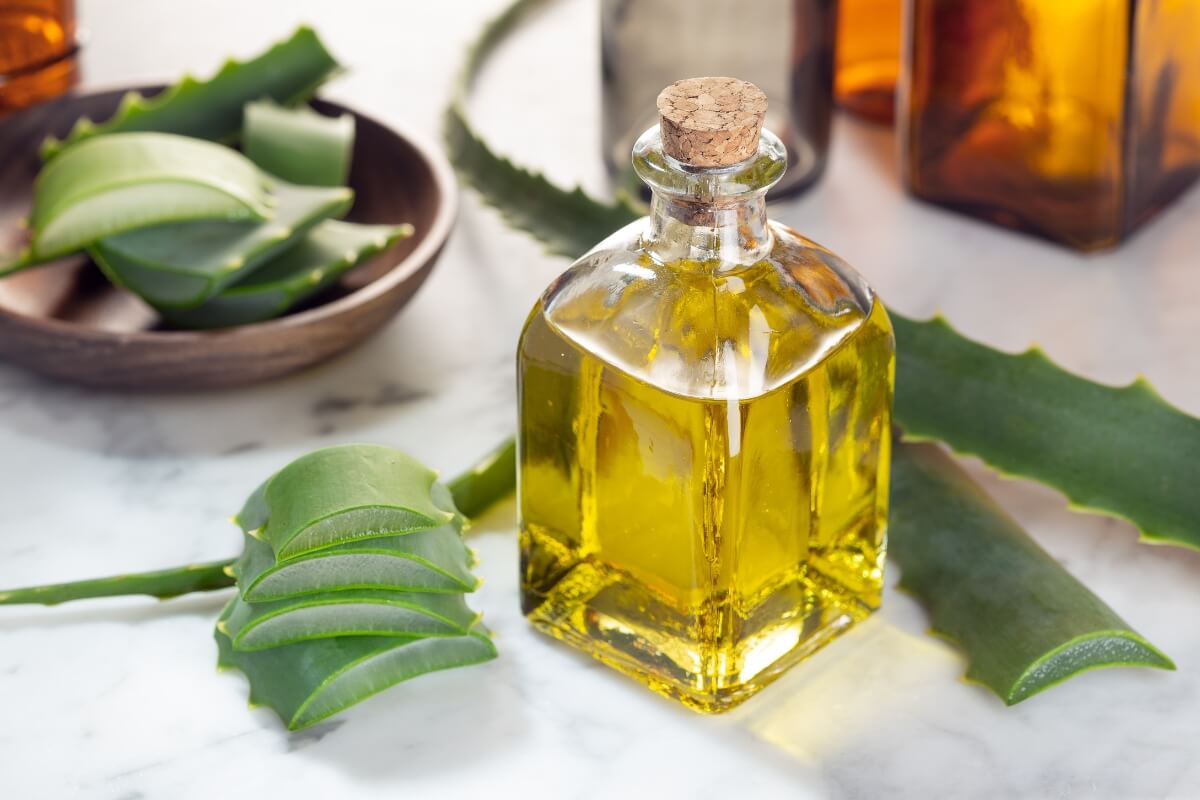
The correct way to use aloe vera in low porosity hair is to dilute the gel with warm water, use the juice instead, or combine it with lightweight moisturizing oils to prevent it from clogging the hair’s surface.
Let me show you the different ways you can use aloe vera on low porosity hair:
Mix Aloe Vera Gel With Warm Water
Warm water opens the cuticles of the hair, allowing the gel to penetrate the hair shaft and deliver its nourishing ingredients. Without warm water, the gel will sit on the surface, creating a layer of residue, also commonly referred to as the “aloe build-up.”
To do this, mix two tablespoons of aloe vera gel with a cup of warm water and blend it thoroughly until there are no clumps. You can then spritz your hair with the mixture and let it sit for at least 10 minutes before rinsing out.
As opposed to applying the raw gel, mixing it with water will reduce the gel’s potency and thick consistency.
Use Aloe Vera Juice Instead of the Gel
Aloe vera is more beneficial for high porosity as it can penetrate and seal the raised cuticles. Low porosity hair, on the other hand, struggles with gel-type moisturizers. Rather than boosting moisture, gels with thick consistency tend to clog the hair cuticle layer, causing dryness and breakage.
That’s why aloe vera juice is a better alternative for low porosity hair due to its lightweight consistency. It can penetrate the cuticles without leaving any residue, providing hydration and nourishment on a deeper level.
Here’s a quick and easy recipe: Mix aloe vera juice with some warm water into a spray bottle, shake it well, and spray it onto damp hair.Mix Aloe Vera with Lightweight Oils
Aloe vera gel mixed with oil will have different properties than the aloe gel by itself. Oils have better penetrating properties, while gels dry out fast to leave a cast on the hair.
Mixing your aloe vera gel with a lightweight oil like argan, benefits from the oil’s deep penetrating properties. Not only it absorbs faster, it also provides the dual benefits of moisturizing and sealing low porosity hair.
Use It as a Pre-Poo Treatment
Pre-shampoo treatments are excellent for low porosity hair because they give the strands time enough time to absorb heavy moisturizing ingredients before they are washed out, thus eliminating the possibility of buildup. To use aloe vera as a pre-poo treatment, mix aloe juice or the gel with warm coconut oil and apply it to damp hair. Let it sit for 20 minutes before rinsing out and shampooing your hair.
Read: Is a Pre Poo for low porosity hair excessive or necessary?Use It After a Clarifying Shampoo
Clarifying shampoos are deep cleansers that lift hair cuticles via alkaline reactions to pull out dirt and impurities.
A clarifying shampoo leaves the hair highly receptive to any treatment. That’s why hairdressers use them prior to color and Brazilian keratin hair treatments.
Why not do the same if you want to get the maximum out of your aloe vera gel?
It’s the perfect window to get the gel to absorb deeper into the hair.
Mix It with Rhassoul Clay and Use as a Deep Conditioner
Rhassoul clay is a powerful natural product known for its ability to pull out dirt and impurities from the hair while providing moisture at the same time.
Combining it with aloe vera gel creates a paste-like texture that can be used as a deep conditioning treatment for low porosity hair. To use, mix two tablespoons of rhassoul clay with a quarter cup of aloe vera gel. Apply it to damp hair and let it sit for 30 minutes before rinsing out.
Apply It Only to the Ends
Mix with a leave-in conditioner and apply it to the ends. The ends of your hair are the dryest and most porous parts, therefore absorbing faster without leaving residues.
Use the Greenhouse Technique
The greenhouse technique, also known as the baggy method, is a hair moisturizing technique that involves layering products and using steam to seal in moisture. It’s an excellent way to reduce the risk of buildup and provide long-lasting hydration for low porosity hair.
To do this, apply aloe vera gel as the last layer after using an oil or butter pre-treatment. Wrap your hair in a warm towel or plastic cap and let it sit for 20 minutes. You can then rinse out the products using lukewarm water.
Keep Assessing Your Hair
Listen to your hair and keep looking for signs of dryness and buildup.
If you are doing it correctly, your hair will respond well. It will stay well-moisturized for longer, have better length retention, and you may even notice improved growth.
When is Aloe Vera Beneficial for Low Porosity Hair?
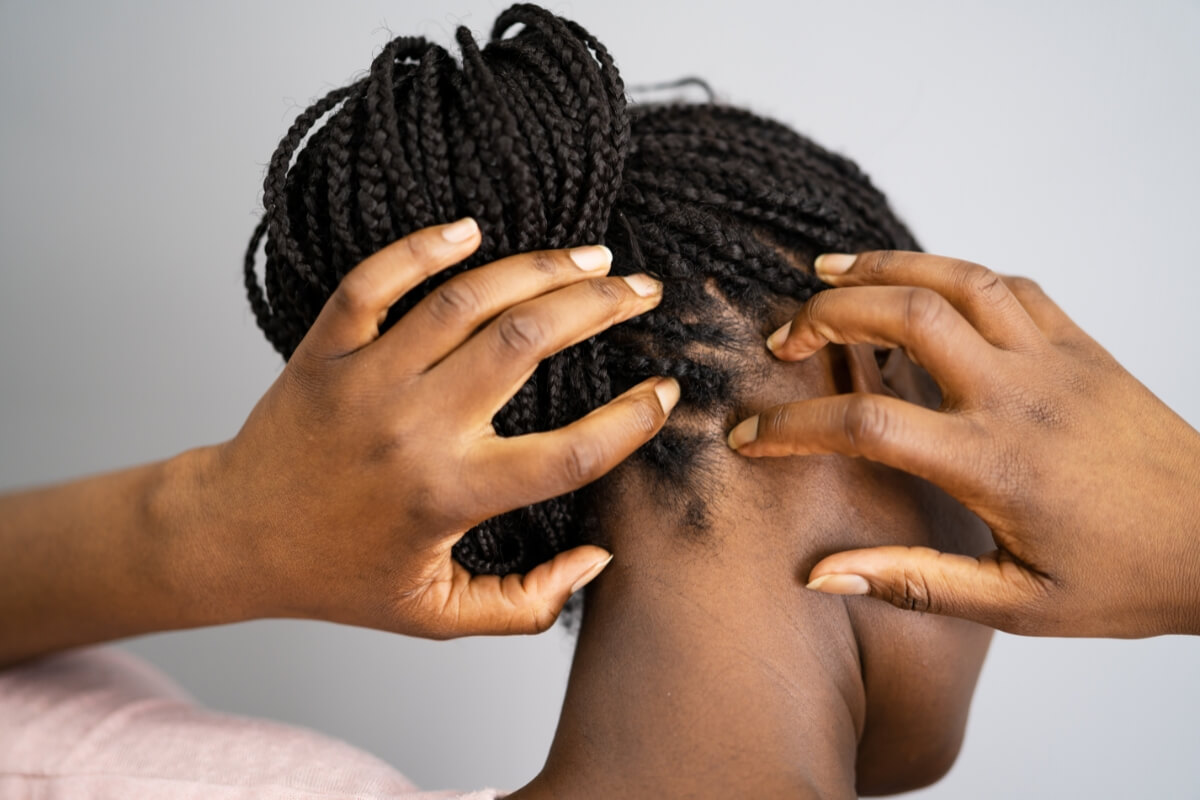
Despite its potential for drying out and overloading the hair, aloe vera can be beneficial when used in moderation to treat other issues.
Here are some of the reasons you’d want to include aloe vera in your hair care routine:
It Reduces Scalp Inflammation
Aloe vera has anti-fungal properties and anti-inflammatory benefits [4] that can help reduce scalp inflammation and irritation [5] caused by the overuse of chemicals or products. It’s also rich in antioxidants [6], which can help protect from free radical damage to keep the scalp healthy.
A healthy scalp can also work in your favor to prevent hair loss and stimulate more growth.
It’s Excellent for Fighting Dandruff
Aloe vera can prevent dandruff [7]. It contains numerous active compounds, including natural salicylic acids [8], that are commonly found in anti-dandruff shampoos. A review published on BioMed Research shows that aloe vera can prevent scalp fungal infections like seborrheic dermatitis. [9]
It Can Control Greasiness
Aloe vera contains natural enzymes that can break down stale sebum and fats on the scalp to prevent greasiness. [10]
It also has antimicrobial properties that will aid in controlling bacteria growth on the scalp.
It Helps Reduce Frizz and Detangle the Hair Strands
Aloe vera’s hydrating and moisturizing properties can help reduce frizz and detangle the hair. It also helps to smooth down the cuticles, leaving the hair shiny.
It Can Stimulate Hair Growth
Aloe vera can help stimulate blood circulation on the scalp, which may promote faster hair growth. It also helps to nourish and strengthen the hair follicles, making them less prone to breakage.
It Can Protect from UV Damage
Aloe vera can work as a natural sunscreen for your hair!
Research suggests that aloe vera offers protection against UVA [11]. This means it can help protect your hair from drying out, frizzing, and discoloration if you spend a lot of time in the sun.
Allergic Reaction Disclaimer
Aloe vera contains latex proteins located between the plant’s rind and the pulp. These proteins can cause allergic reactions in some people, ranging some mild irritation to contact dermatitis. [12]
Common signs of allergy from aloe vera:
- Itchy skin
- Swelling
- Burning sensation
- Welts
- Redness
So please do an allergy test before using any aloe vera product.
Final Thoughts
When used correctly, aloe vera can be a beneficial addition to any low porosity hair care routine. It offers numerous benefits in terms of moisturizing, cleansing the scalp, keeping out dandruff, and it can even be your new sunscreen.
However, make sure to avoid excessive use and take caution if you have an allergy or sensitivity.
With the right techniques and knowledge, you can make aloe vera work for you just like Cleopatra did. Although, I am not sure if she had low porosity hair.
References & Citations
- Hamman JH. Composition and Applications of Aloe vera Leaf Gel. Molecules. 2008; 13(8):1599-1616. https://doi.org/10.3390/molecules13081599
Retrieved on 01 Dec 2022. - Characteristic fillet of aloe vera gel as edible coating Characteristic fillet of aloe vera gel as edible coating – Scientific Figure on ResearchGate. Available from: https://www.researchgate.net/figure/pH-Fillet-of-aloe-vera-gel-on-cool-and-room-temperature_tbl3_339714009
Retrieved on 01 Dec 2022. - Mary George, Neethu & Potlapati, Amruthavalli. (2021). Shampoo, conditioner and hair washing. International Journal of Research in Dermatology. 8. 185. 10.18203/issn.2455-4529.IntJResDermatol20214930.
Retrieved on 01 Dec 2022. - Paul, S., Modak, D., Chattaraj, S. et al. Aloe vera gel homogenate shows anti-inflammatory activity through lysosomal membrane stabilization and downregulation of TNF-α and Cox-2 gene expressions in inflammatory arthritic animals. Futur J Pharm Sci 7, 12 (2021). https://doi.org/10.1186/s43094-020-00163-6.
Retrieved on 01 Dec 2022. - Da Vardy, Ad Cohen, T Tchetov, E Medvedovsky & A Biton (1999) A double-blind, placebo-controlled trial of an Aloe vera (A. barbadensis) emulsion in the treatment of seborrheic dermatitis, Journal of Dermatological Treatment, 10:1, 7-11, DOI: 10.3109/09546639909055904
Retrieved on 01 Dec 2022. - Hęś M, Dziedzic K, Górecka D, Jędrusek-Golińska A, Gujska E. Aloe vera (L.) Webb.: Natural Sources of Antioxidants – A Review. Plant Foods Hum Nutr. 2019 Sep;74(3):255-265. doi: 10.1007/s11130-019-00747-5. PMID: 31209704; PMCID: PMC6684795
Retrieved on 01 Dec 2022. - Hashemi SA, Madani SA, Abediankenari S. The Review on Properties of Aloe Vera in Healing of Cutaneous Wounds. Biomed Res Int. 2015;2015:714216. doi: 10.1155/2015/714216. Epub 2015 May 19. PMID: 26090436; PMCID: PMC4452276.
Retrieved on 01 Dec 2022. - Surjushe A, Vasani R, Saple D G. Aloe vera: A short review. Indian J Dermatol 2008;53:163-6
Retrieved on 01 Dec 2022. - Panahi Y, Rastgar N, Zamani A, Sahebkar A. Comparing the Therapeutic Effects of Aloe vera and Olive Oil Combination Cream versus Topical Betamethasone for Atopic Dermatitis: A Randomized Double-blind Clinical Trial. J Pharmacopuncture. 2020 Sep 30;23(3):173-178. doi: 10.3831/KPI.2020.23.3.173. PMID: 33072415; PMCID: PMC7540232.
Retrieved on 01 Dec 2022. - https://www.webmd.com/beauty/benefits-of-aloe-vera-for-your-hair.
Retrieved on 01 Dec 2022. - Rodrigues, Daniela & Viotto, Ana & Checchia, Robert & Gomide, Andreza & Itri, Rosangela & Severino, Divinomar & Baptista, Mauricio & Martins, Waleska. (2016). Mechanism of Aloe Vera extract protection against UVA: Shelter of lysosomal membrane avoids photodamage. Photochem. Photobiol. Sci.. 15. 10.1039/C5PP00409H.
Retrieved on 01 Dec 2022. - Guo X, Mei N. Aloe vera: A review of toxicity and adverse clinical effects. J Environ Sci Health C Environ Carcinog Ecotoxicol Rev. 2016 Apr 2;34(2):77-96. doi: 10.1080/10590501.2016.1166826. PMID: 26986231; PMCID: PMC6349368.
Retrieved on 01 Dec 2022.
About the Author
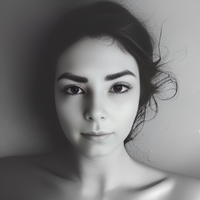 Tina Moretti
Tina MorettiTina Moretti, a passionate hair care enthusiast with over a decade of expertise, dedicates herself to empowering women with proven hair care advice. Recognized for her hands-on experience and trusted guidance, Tina turns every strand into a statement of beauty and confidence.